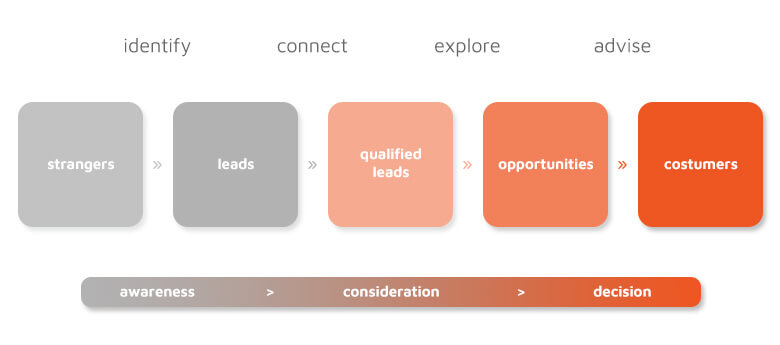Inbound Sales: the model that privileges the consumer
News
The emergence of the internet has significantly changed consumer buying behavior by giving them more tools to find the answers to their needs without having to resort to a sales professional. 20 years ago Marketing and Sales were two different teams and their work didn’t intersect. However, the evolution of the market forced these professionals to adapt and join their efforts to improve the quality of their sales.
In today’s article, I talk about Inbound Sales – a personalized sales methodology adapted to modern times.
Inbound Methodology: what is it?
The inbound methodology is a consumer-focused strategy developed in three steps:
- Attraction: the company seeks to add value by offering useful and relevant content, teaching the customer about the area in which the company operates (for example, a digital communication company will offer content in the area of digital marketing)
- Conversion: at this stage the company starts a relationship with the potential consumer (lead), collecting information about it. At this stage, it also investigates the lead’s needs and offers a solution that will satisfy those needs.
- Relationship: the company seeks to create an exceptional experience for leads and customers, which exceeds their expectations. At this stage that the company creates its brand advocates.
What is Inbound Sales?
Inbound Sales is a sales methodology focused on the needs, challenges, and objectives of individual consumers.
The sales process through Inbound Sales is developed in four phases:
- Identify business opportunities. In this first phase, we find the leads in the first phase of the purchase journey that are ready to start contacting the companies that will satisfy their needs.
- Relate to leads, understanding their needs. At this stage you should define your persona, define what means you will use to contact them, and define what content you will offer, always bearing in mind that it should educate the lead and not sell your service/product.
- Explore the leads’ goals and/or challenges to assess the degree of qualification of your offer. At this stage, you should focus on leads and on understanding what their challenges and goals are so that you can establish a relationship between them. Later, you can present your solution and talk about budgets.
- Advise leads on why the solution offered is the one that best meets their needs. At this stage, you should recap everything you’ve learned about leads, make a personalized proposal on how they will benefit from your offer, and finally confirm costs and project timeline.
When using the inbound strategy, it is essential to have alignment between the Marketing and Sales teams, as there is an interdependence between the two – the first collects information about the leads through the offer of content adjusted to the phase of the purchase journey in which it is currently so that the second can present the best solution to respond to the needs of the leads.
Benefits
The use of the Inbound Sales methodology has immense advantages, however, I will present those that, in my opinion, are the main ones:
➔ Optimizes the salesperson’s time and increases sales effectiveness: the inbound methodology focuses only on qualified leads, that is, leads that have already detected what their needs are and are already looking for a solution for them.
➔ Fewer business opportunities are lost: as it works in partnership with marketing, leads were nurtured throughout the process, so a relationship of trust was established with them, allowing them to reach the last level of the sales funnel. sales where it will convert leads into customers.
As you can see throughout this article, inbound sales focus on people. In an increasingly human market, what better sales strategy could there be?



